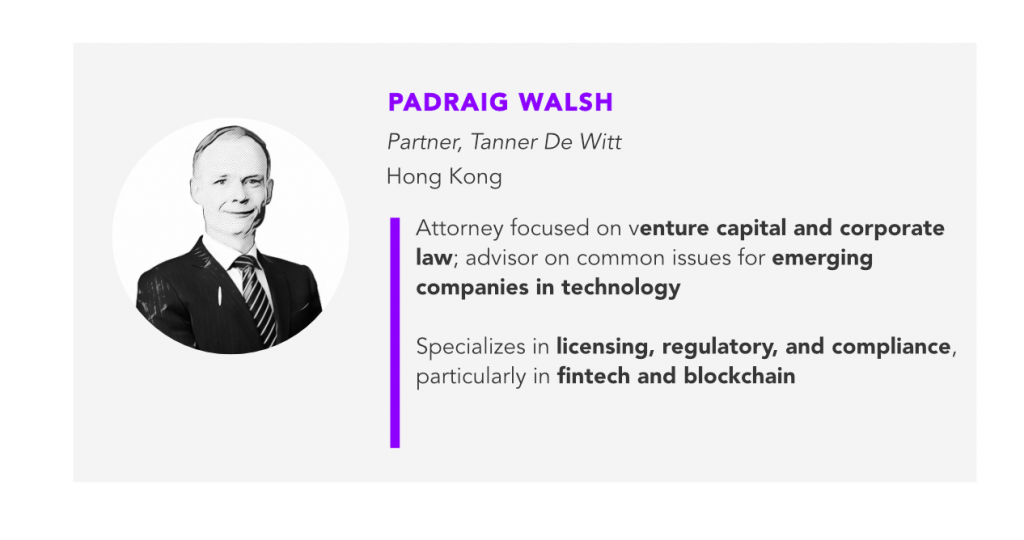Why would tokenization of real estate be attractive?
Fractional ownership will allow part of an asset to be made available by tokenization. This provides the asset owner with different choices on how to approach the market. For instance, an anchor investor could hold a 40% interest, 30% could be released to other key investors, and 30% could be tokenized.

Tokenisation allows access to a broader range of people who can participate in asset ownership. An investor can participate who may not be able to commit HK$50,000,000, but would be able to commit HK$500,000. Tokenisation makes this more possible.
In time, investors will be able to access to a broader range of property assets. Presently, the international property investment market is difficult to access, and investors need to rely on intermediaries to present opportunities. Tokenization should help democratize this.
Real estate investment will be made more liquid. Tokens will be traded in the secondary market. A real estate investment is usually locked up for a number of years. Tokenised real estate could be sold wholly or partially at the discretion of the token holder.
Public trading in real estate. It’s like a REIT then.
Only at the surface level. In practice, tokenized real estate investment should be quite different.
REITs are securities traded on stock exchanges. The underlying investment and asset management policy is subject to many conditions. The operator and other participants all are subject to a high degree of regulation. The cost of formation and operation mean REITs are geared to a property portfolio comprising many expensive property assets. The nature of the investment lends itself to a buy and hold investment policy.
Here are some of the differences that will apply to tokenized real estate investments:
1. There will be less involvement from intermediaries compared to REITs.
2. Cost of formation will be significantly less. Upon maturity of the technology and infrastructure, it should be viable for a single property asset to be tokenized.
3. Trading in the secondary market will be on automated exchanges, not stock exchanges. Those exchanges will be operating globally, 24/7, 365 days a year. Clearing and settlement will be conducted almost instantaneously, and the register of members will be recorded on the blockchain.
4. Investment mandates, strategies and policies will be substantially driven by commercial drivers of the asset owner, and hence more flexible and varied.
5. There should be less regulation involved, compared to a REIT.
That all sounds very fine indeed. Any obstacles?
There are a number of challenges that lie ahead.
1. The main attraction of tokenized real estate is liquidity. Liquidity is driven first and foremost by quality assets. There is a risk tokenized real estate could become associated with low-grade assets that could not otherwise be sold. So the risk is that initially tokenization of real estate is used to move lower grade real estate assets, and then in the long term, the market assumes that tokenized real estate is poor quality real estate.
2. An offering of tokenized real estate is regulated. The offering does include a security, after all. The promoter should be regulated, or operating through a regulated person. The exchange on which the token is available should be regulated. The offering itself will need to comply with regulation. Any failure to meet regulation will be a problem.
3. Tokenised real estate projects will have less regulation than a REIT. This may be a bug, not a feature. Let’s take Hong Kong. A REIT is regulated in Hong Kong because the Hong Kong government took the view that public trading in real estate investment had specific features that demanded specific features to protect the public. It is regulated for a reason. An offering of real estate tokens is a high octane form of public offering of investment in real estate. Will lawmakers change the laws and regulation to bring tokenized real estate under the REIT umbrella of regulation (or a similar set of rules)? There may be a public policy argument for doing so.
4. The infrastructure is not there – at least not in Hong Kong. Banks, custodians, trustees, exchanges, brokers, valuers and auditors all need to be involved, and approved and licensed to do so. Then, the technology that links them needs to be fit-for-purpose. We are not there yet, though many great minds are working on this.
What’s a worst-case scenario?
The worst-case scenario is poor quality assets mis-sold, causing retail investor loss across multiple countries, and leading to a crisis of confidence in the underlying technology and an enforcement crackdown.
Sounds like ICOs.
Funny that.




